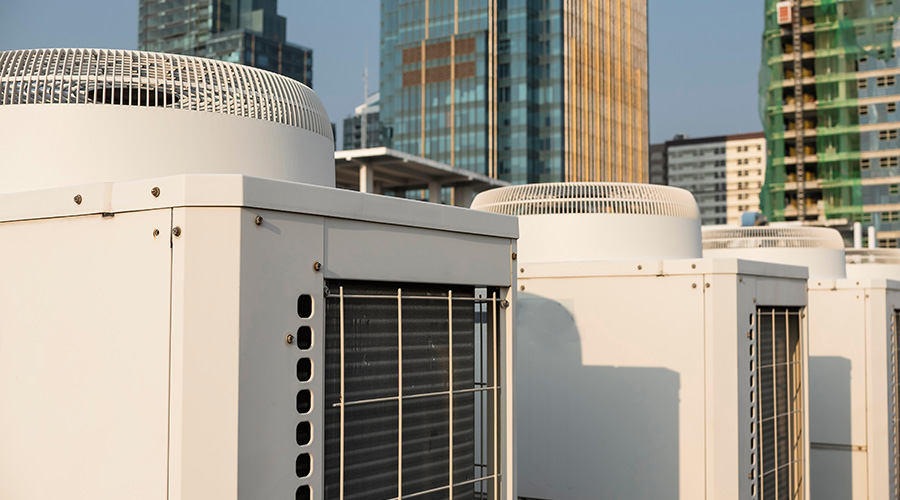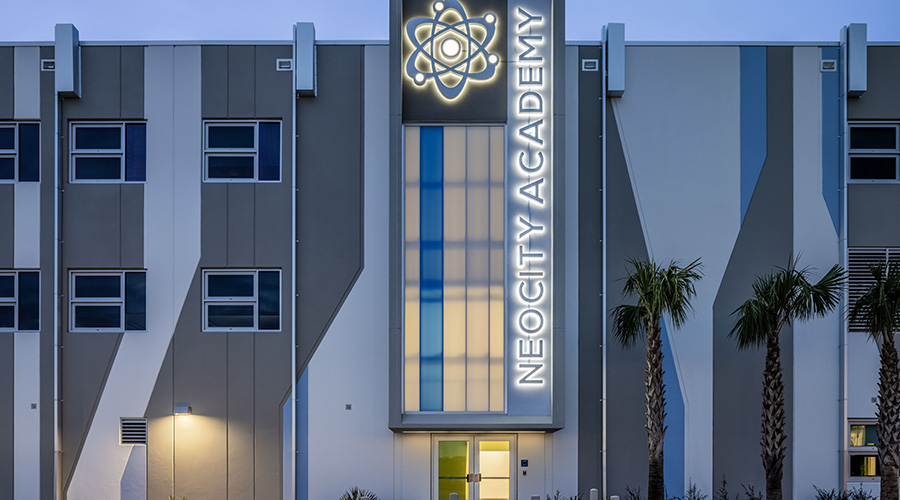How LEED Volume Can Help Facility Managers
Facility managers and building owners are increasingly being asked to demonstrate the sustainability of their properties and building portfolios by tenants, investors and municipal regulators, among other parties. LEED certification is established as the default "seal of approval" to demonstrate sustainability of a building to the marketplace. Many facility managers will be familiar enough with the certification process to appreciate that the significant value inherent in the single building certification process could be leveraged and multiplied across a portfolio of buildings.
The U.S. Green Building Council's (USGBC's) LEED Volume Program is one vehicle that enables a transition from certification of a few disparate properties to a more holistic portfolio approach. As with other initiatives, consistently applying and leveraging sustainability best practices across a portfolio of properties should bring efficiencies of scale; however, the value of investment in a comprehensive program is often difficult to quantify, so organizations have trouble deciding whether to pursue Volume. Understanding how LEED Volume works and being able to validate the business case for using this approach are the keys for facility managers to reap the rewards of the LEED Volume system.
What is LEED Volume?
As LEED adoption has grown, those seeking to certify multiple buildings have identified a number of challenges with the one-by-one nature of the certification process.
PNC Financial Services Group was one organization keen to apply the lessons learned from several successful "one-off" certifications in their portfolio of new bank branches. Their experience led to the creation of a new certification model in 2003-04 that came to be known as LEED Volume. Volume allows owners of multiple, similar buildings to internalize elements of the certification process for consistent outcomes across the portfolio.
USGBC piloted the program between 2004 and 2010 with approximately 40 participating organizations, and launched the current version of the program in November 2010. LEED Volume is available to applicants using either the Existing Buildings O&M (LEED-EBOM) or Design and Construction (LEED NC, CI and Retail) rating systems.
LEED Volume's advantages include reduced certification fees, streamlined documentation requirements, a consistent review criteria customized to the organization and an opportunity to leverage bulk contracts for LEED-related products and service providers. Many organizations also use the program as a way to formalize and implement green best practices across the portfolio, regardless of whether all buildings will undergo certification.
The Volume program is structured differently than the one-off certification path, and is essentially agnostic to the rating system selected. Prior to certifying individual properties, a precertification application formalizes the applicant's approach to developing or managing their buildings to meet the requirements of the chosen LEED rating system, and is submitted to USGBC for review and rating.
The precertification application for LEED Volume consists of:
- A "prototype" set of credits that will be consistently achieved across most of the portfolio.
- A comprehensive quality control plan that explains how the applicant will manage delivery of certified properties internally or with specialist assistance from service providers.
- An education plan detailing how participants will be trained on best management practices required to deliver certified buildings.
Once the precertification application is approved, properties may be certified under Volume. Streamlined documentation is collected as part of a building certification and the applicant submits scorecards confirming each property meets certification requirements. USGBC audits a select sample of the scorecards submitted, which involves a full review of the documentation for that property to confirm that the precertified approach has been reliably followed.
Business Case for LEED Volume
LEED Volume candidates typically have some experience with one-off LEED certification and want to certify at least 25 properties over three years. Alternatively, candidates may have a sustainability platform that focuses on utility efficiency, resource conservation and an optimized tenant experience through indoor environmental quality that may or may not involve third party certifications.
The Volume program adds value when an owner, operator or developer wishes to certify multiple properties. However, an up-front investment of both dollars and time is required for precertification. Many struggle to validate whether the Volume Program is the right path forward within the requirements of their existing business case models.
Typically, organizations are interested in how many certifications it takes to realize a return on the precertification investment. By comparing Volume and individual certification costs over a given time frame, the potential applicant can determine a break-even point. The break-even point can range from eight to 20 projects, depending on factors including the extent to which a company can perform activities (such as commissioning) internally, the complexity of the prototype, and the level of certification being sought. Specialist expertise during the precertification phase is often necessary to minimize the time to the first Volume property certification, so that the benefits of the programmatic approach can be realized as soon as possible. These soft costs can be considered in the break-even study.
Another approach is to consider the key drivers and barriers to joining the Volume program. For example:
- If reducing utility spend is a priority, the Volume program can help an organization focus on areas of largest impact by precertifying credits that reliably improve net operating income.
- Tenants such as U.S. General Services Administration and many Fortune 500 companies are demanding green office space, so the entry cost can be weighed against lost opportunity costs in terms of lease-up speed or tenant retention.
- If an organization owns both LEED and non-LEED certified properties in a particular market, a certification program embedded into the standard building improvement and maintenance process can help elevate overall reputation and performance of the portfolio over time, while also avoiding internal competition.
That said, Volume does not make financial sense in all cases. Other streamlined approaches to greening a portfolio may be more appropriate based on factors such as the level of consistency facility managers can maintain across the portfolio or the number of properties to be certified. If the organization's approach is to selectively certify "jewel in the crown" buildings, then LEED Volume may not add value to your sustainability platform.
Though the initial effort and cost required for LEED Volume might appear prohibitive, a careful study of the business case aligned to key organizational goals and ROI expectations provides a firm foundation on which to base the decision to invest in a Volume approach, and to design a program that maximizes the value of certifications — and building performance — across a portfolio.
The LEED Volume Program offers a valuable framework to manage the implementation of sustainability best practices across a portfolio, as a scalable quality control process for a group of buildings. Additionally, LEED certification is one way to communicate an organization's commitment to sustainability to tenants, employees, investors and industry peers within a framework that is well understood and accepted by the market. Streamlining the LEED process through Volume can reduce per-building costs and level of effort to achieve certification.
Patrick Leonard, PMP, LEED AP, leads the existing portfolio optimization practice at Paladino and Company, a consulting firm that uses sustainability to drive business value. His work centers on helping organizations capitalize on opportunities to grow the economic, environmental and human capital in their building portfolios. Leonard can be reached at patrickl@paladinoandco.com.
U.S. Green Building Council
2101 L Street, NW, Suite 500
Washington, DC 20037
1-800-795-1747
Web site: www.usgbc.org
E-mail: info@usgbc.org
CHAIR
Elizabeth J. Heider
Skanska
CHAIR-ELECT
Allan Skodowski
Transwestern
IMMEDIATE PAST CHAIR
Mark MacCracken
CALMAC Manufacturing
SECRETARY
Punit Jain
Cannon Design
TREASURER
Lisa Shpritz
Bank of America
FOUNDING CHAIRMAN
S. Richard Fedrizzi
Related Topics:














